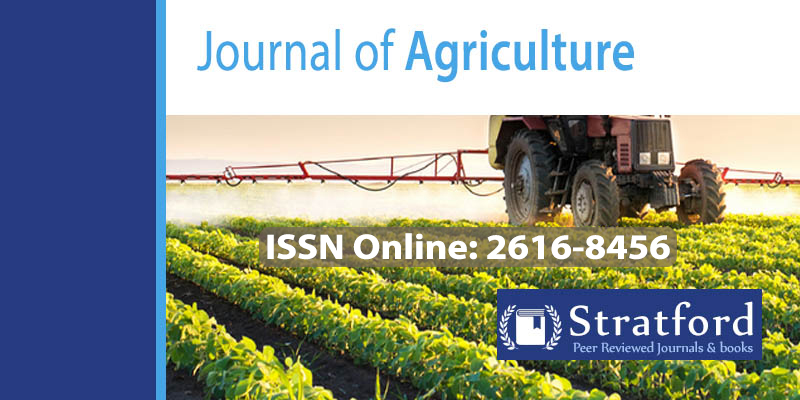Dairy Value Chain and Household Development in Rwanda
DOI:
https://doi.org/10.53819/81018102t50116Abstract
The value chain in terms of dairy can lead to the development of business and households in general. Hence, the aim of the study was to examine the dairy value chain and household development in Rwamagana district in Rwanda. The study employed a descriptive research design to examine the dairy value chain and household development in Rwamagana district in Rwanda. The target population was 11,595 respondents. The sample size was 385 respondents got by using Slovin’s formula. The study used purposive and simple random sampling techniques to determine the sample size. Questionnaire and interview guides were used to collect the data. The validity of the research instrument was maintained by distributing the research instruments to the expert respondents in the area of the study while reliability was maintained by conducting a pilot study that provided reliability of the research instrument. The findings revealed that technical services, dairy inputs availability and profitable market access contributed in household incomes. It was also revealed that animal husbandry techniques by reproduction and artificial insemination promoted cross-breeding, where 50% of respondents confirmed that their cows increased from 1 to 2, and other at 46.9% increased up to 5 cows. The study found that 98.2% of the respondents received trainings on animal health disease management and 97.9% of them practiced what acquired from training, and this improved the animal health and reduced the cows’ death rate. Majority of dairy value chain actors at 88.5% of respondents cultivated fodder to feed their cows and 91.7% of them gained different conservation techniques such as hay making and silage useful in dry and drought seasons to avoid milk shortages and cow death. Besides, 73.2% of respondents of dairy chain actors had different milk equipment to support in keeping good quality and safety, storage and feeding such as milk cans, choppers, sprayers and other testing materials, and 87% of them accessed veterinary pharmacies nearby. Findings revealed that a large number of respondents at 90.9% consumed milk at home level which improved the households’ members livelihood, and the surplus was sold to milk collection centers, milk kiosks, restaurants, hotels, schools. The study recommended that farmers should be mobilized for more house water harvesting strategies and increased measures of fodder conservation by hay making and silage techniques. Government and private sector in partnership with dairy chain actors should put in place a processing plant for products development, diversification, market penetration and market development strategies. There should be mobilizing of private investors or cooperatives in the dairy equipment shops.
Keywords: Dairy, Value change, Household, Household development and dairy value chain, Rwanda
References
Agritrade (2015). Dairy value chain/Rwanda - Government issues new guidelines for milk business; https://agritrade.cta.int/Agriculture/Commodities/Dairy/Dairy-value-chain-Rwanda-Government-issues-new-guidelines-for-milk-business.html. [Retrieved May 02, 2022]
Akoth, W.M. (2017). Influence of dairy farming practices on households’ income in Kenya: A case of dairy commercialization programme in Bungoma county. University of Nairobi. http://erepository.uonbi.ac.ke. [Retrieved October 03,2022]
Beyi, A. F. (2016). Feed the Future Innovation Lab for Livestock Systems Rwanda: Animal Source Foods Production and Marketing Brief. The Management Entity at the University of Florida.
Bishwa, M. A. (2016).Concept of Value Chain in Dairy Cooperatives. https://www.researchgate.net/publication/305807202_Concept_of Value_Chain_in_Dairy_Cooperatives [Retrieved March 03,2022]
Calzon, B. (2021). Your Modern business guide to data analysis methods and techniques. https://www.datapine.com/blog/data-analysis-methods-and-techniques/#definition [Retrieved November 03, 2021]
Clay, D. (2021). Article: Rwanda, www.britanica.com, [Retrieved September 25, 2021].
Cooper, D, R & Schindler, P, M. (2011). Business Research Methods, 11th Edition, McGraw-Hill International Edition, New Delhi.
Corporate Finance Institute. (2015-2021). Random sampling. Https: // corporatefinanceinstitute.com/resources/knowledge/other/random-sampling/ [Retrieved October 04,2021].
Dairy Sustainability Framework. (2017). Theory of Change. /dairysustainabilityframework.org/wp-content/uploads/2018/11/DSF. [Retrieved October 28, 2021]
Edrawmax (2021). Value chain analysis-Definition, Benefits & Examples. https://www.edrawmax.com/value-chain/ [Retrieved September 30, 2021]
Eugene, M. (2017). Characterization of cattle Production Systems in Nyagatare District of eastern province-Rwanda.
FAO, GDP & IFCN. (2018). Dairy Development’s Impact on Poverty Reduction. Chicago, Illinois, USA.
FAO. (2019). Modernizing Rwanda’s livestock to attract investment and enhance food security; https://www.fao.org/rwanda/news/detail-events/en/c/1185157 [Retrieved September 20,2021]
FAO. (2021). Dairy Market Review - Overview of global dairy market developments in 2020, April 2021. Rome, Italy. [https:// https://www.fao.org/3/cb4230en/cb4230en.pdf [Retrieved October 29, 2021]
FAO. (2021). Rwanda at glance. https://www.fao.org/rwanda/our-office-in-rwanda/rwanda-at-a-glance/en/, [Retrieved September 20, 2021]
FAO. (2022). Gateway to dairy production and products. https://www.fao.org/dairy-production-products/socio-economics/the-dairy-chain/en/. [Retrieved on 17/08/2022].
Hemme, T, & Otte, J. (2010). Status of and Prospects for Smallholder Milk Production–A Global Perceptive (p.19–22). Italy: Food and Agriculture Organization of the United Nations
Hill, J.P. (2017). Assessing the overall impact of the dairy sector. Fonterra Cooperative Group, New Zealand. https://doi.org/10.19103/AS.2016.0005.43
International Labour Organization. (2020). Developing the Dairy Value Chain in Egypt’s Delta. Market System analysis
Jaiswal P, Chandravanshi H, &Netam A. (2018). Contribution of dairy farming in employment and household nutrition in India. Int J Avian & Wildlife Biol. 2018;3(1):78-79. https://doi.org/10.15406/ijawb.2018.03.00059
Johnson, D. (2021). What is Data Analysis? Research/Types/Methods/Techniques. https://www.guru99.com/what-is-data-analysis.html. [Retrieved November 03,2021]
Kamanzi, M. & Mapiye, C. (2012). Feed inventory and smallholder farmers' perceived causes of feed shortage for dairy cattle in Gisagara district, Rwanda. Tropical Animal Health and Production. 44(7):1459-68. https://doi.org/10.1007/s11250-012-0087-3
Liveness, J.B, Daniel, C, Timothy, N. G, & Sera, R.G . (2021).Smallholder dairy farming contributes to household resilience, food, and nutrition security besides income in rural households. Animal Frontiers, Volume 11, Issue 2, Pages 41–46, https://doi.org/10.1093/af/vfab009
Mayne, J. (2015). Using theories of change in the CGIAR Research Program on Agriculture for Nutrition and Health. www.researchgate.net. [Retrieved October 04, 2021]. https://doi.org/10.1177/1356389015605198
McLeod, S. A. (2018). Questionnaire: definition, examples, design and types. Simply Psychology. https://www.simplypsychology.org/questionnaires.html [Retrieved November 01, 2021]
McLeod, S. A. (2019). Sampling methods. Simply Psychology. https://www. Simply psychology. org/sampling.html [Retrieved November 01, 2021]
Middleton, F. (2021).Reliability vs validity: What‘s the difference? (2nd Ed.). www.scribbr.com [Retrieved November 01, 2021]
Muehlhoff, E, Bennett, A, and McMahon, D. (2013). Milk and dairy products in human nutrition. FAO, 2013. ISBN 978-92-5-107863-1.
NIFA (2022). Animal reproduction. https://www.nifa.usda.gov/grants/programs/animal-programs/animal-reproduction. [Retrieved August 17,2022].
Survey monkey (2021). Developing data analysis plan. https://www.surveymonkey.com/mp/developing-data-analysis-plan/ [Retrieved October 03,2021]
Vernooij, V. (2018). Kenya dairy Value chain. Farmers’ Workshop, Nandi and Bomet counties. https://www.slideshare.net/ILRI/nandi-bomet. [Retrieved October 30, 2021]


